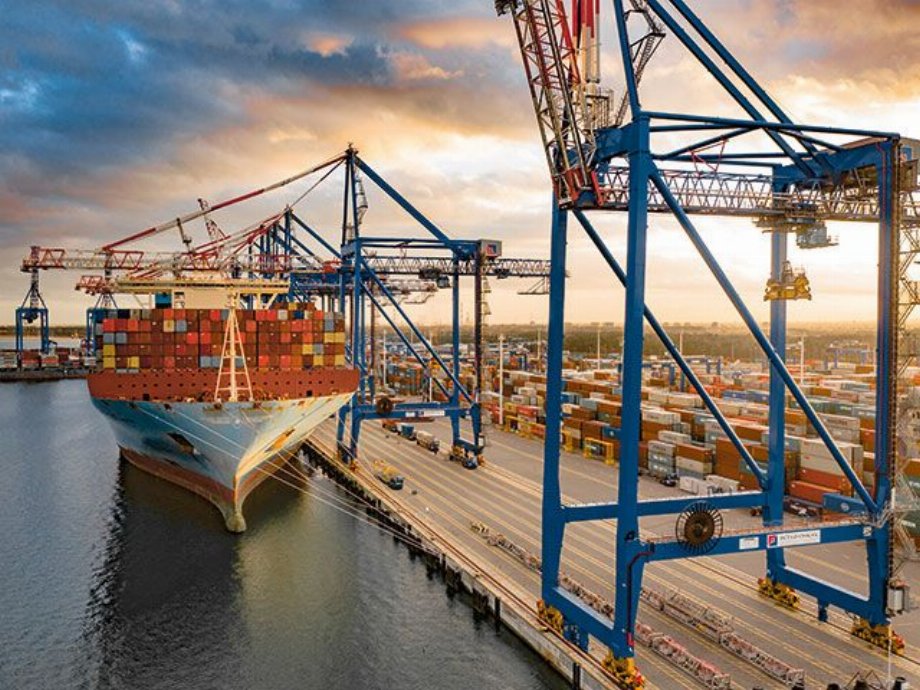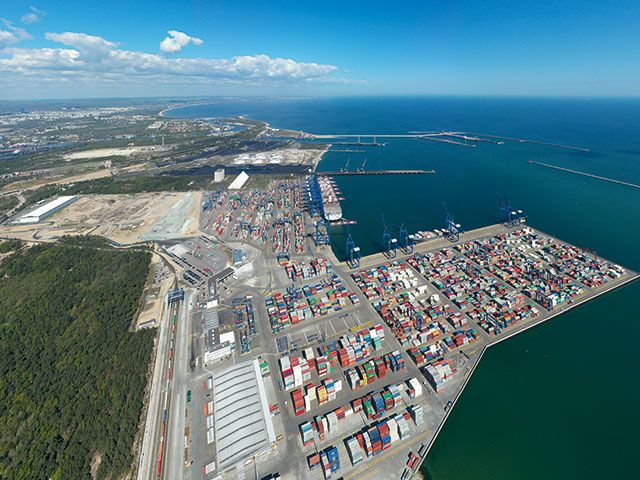Uncontained growth
The Port of Gdańsk strives for leadership in the Baltic region and is one of the fastest-growing container ports in Europe. Interview by Anna Zhuravleva

The Port of Gdańsk strives for leadership in the Baltic region and is one of the fastest-growing container ports in Europe. Interview by Anna Zhuravleva

The Port of Gdańsk – the oldest and largest Polish seaport – handled over 52 tonnes of cargo in 2019, which makes it the fourth-largest port in the Baltic Sea in terms of volumes. It has a port limit – the seaward boundaries of the area over which a port has jurisdiction over navigation and operational procedures – of 15,988 ha.
In the last three years, it outperformed ports in Klaipeda in Lithuania and Gothenburg in Sweden. However, situated in Poland’s north, it is still scrambling for leadership against Russian heavy weights – Saint Petersburg, Primorsk and Ust-Luga.
The seaport, located in the northern part of Gdańsk, comprises two principal sections: the inner port stretching along the Vistula River and the outer port with direct access to the Gulf of Gdańsk. The outer port includes Deepwater Container Terminal (DCT), connecting Asia, the European Union and the emerging markets of Central Europe. DCT Gdańsk ranks as the most rapidly growing container terminal in the country. Its annual capacity is 3.25 million TEU of cargo. In 2019, it handled more than 2 million TEU. A twenty-foot equivalent unit (TEU) is a shipping container whose internal dimensions measure about 20 feet long, 8 feet wide and 8 feet tall.
In September, the terminal received the world’s largest container ship MSC Gülsün, as big as four football fields. The ship unloaded 11,000 containers, marking the largest regular container exchange in Europe. The Gdańsk port includes passenger and freight ferry terminal located at Westerplatte, liquid fuel and dry bulk terminals as well as an LPG terminal with a storage base. Last year, the government also confirmed the plans to install a floating storage and regasification unit in the port.
The ports’ cargo transshipment in the last three years grew by around 40 percent in total. Growth skyrocketed in 2018 when the port marked over 20 percent increase in transported cargo, becoming the fastest-growing port in Europe. Last year, growth slowed down to 6.4 percent but was still in line with the targets.
The infrastructure of the inner port, however, has limitations that do not allow serving extra-large vessels like MSC Gülsün received by DCT. The inner port is designed for vessels with a draught of only slightly above 10 meters, while the ships currently often used for cargo transportation need a minimum of 13-14 meters depth to navigate. This is why the port has been working for years to build another deep-water area called the Central Port.
THE FLAGSHIP INVESTMENT
The construction of the Central Port, the flagship investment of the Port of Gdańsk, will not only enable receiving the ships with an increased draught but increase the capacity too. It would give the port a chance to rank number one in the Baltic Sea region and to catch up with the top ports in Europe in the future. In 2018, the port ranked 15th by container throughput in Europe, according to porteconomics.eu data. “The Port of Gdańsk found this solution, which is 100 percent in line with our government’s concept of doubling Polish ports transshipment capacity. Only then we will be at the Rotterdam level,” Marek Grobarczyk, the Polish maritime minister, said. Currently, Rotterdam – Europe’s largest container port – transships about nine times more cargo than Gdańsk.
A consortium of two companies worked for almost a year to prepare six initial concepts for the Central Port until eventually the final one was chosen last year. The Central Port will cover 1,400 hectares of water and 410 hectares of land. There will be, among others, two container terminals, an offshore terminal and an LNG terminal, along with a space for a shipyard and passenger ships.
The new project will include a total of nine terminals, more than 19km of operational quays and 8.5km of breakwaters. The investment size is estimated at PLN 12 billion with the first terminals ready in 2029. Ultimately, the investment is intended to nearly double the port’s transshipment capacity, reaching 140 million tonnes annually by 2050 compared to the current 76.2 million tonnes, Mariusz Jagłowski, the port’s representative, told the Warsaw Business Journal. Critics, however, have called out the so-called “cannibalization” risks, meaning that terminal operators in the Polish Tri-City – a metropolitan area comprising Gdańsk, Gdynia and Sopot, as well as minor towns in the vicinity – may start competing with each other as the expansion of infrastructure continues.
The new owners of the DCT – Singapore’s PSA International, Polish Development Funds (PFR) and IFM Global Infrastructure Fund – promised to support DCT plans to further increase the capacity. At the same time, the Port of Gdynia plans to build the outer port with container terminals. These projects running simultaneously raise concerns about whether all the new infrastructure will be used to its full potential. The Port of Gdańsk did not comment on the matter.

BEYOND THE EU
In recent years, the Gdańsk port has accelerated its international expansion. On top of the costeffective connection with Central and Eastern Europe – the Czech Republic, Slovakia, Hungary, Belarus and Ukraine, the port collaborates with the countries from outside the EU, such as Russia, Norway and China. In 2017, the port signed a cooperation agreement with 11 ports of global importance. Along with major European partners, such as Rotterdam and Hamburg, the agreement included the South Korean Port of Incheon, the key Chinese harbor Port of Shenzhen and the principal port in Malaysia, Klang. Last year, the port marked the launch of the first permanent railway connection from China to DCT. The new route allows shortening travel time from China by about five days and cutting costs, which makes it an alternative to Western European ports for Asian partners. Łukasz Greinke, head of the management board of the Gdańsk port, claimed in October 2019 that Gdańsk was the “only regular Baltic port of call for ships from Asia.